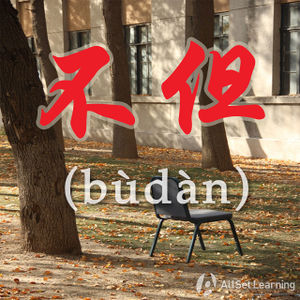Difference between revisions of "Expressing "on the contrary" with "fan'er""
| Line 1: | Line 1: | ||
| + | {{Grammar Box}} | ||
反而 (fǎn'ér) is used to express "on the contrary" or "in contrast," with 反而 going in the second part of the sentence. | 反而 (fǎn'ér) is used to express "on the contrary" or "in contrast," with 反而 going in the second part of the sentence. | ||
| Line 36: | Line 37: | ||
[[Category: B2 grammar points]] | [[Category: B2 grammar points]] | ||
| + | {{Basic Grammar|反而|B2|……,反而……|他 没有 放弃 , <em>反而</em> 更加 努力 了 !|grammar point|ASGX5QTV}} | ||
| + | {{Similar|The "However" Adverb "que"}} | ||
| + | {{Similar|Expressing Contrariness with "dao"}} | ||
Revision as of 02:48, 13 June 2012
-
Level
-
Similar to
-
Used for
-
Keywords
反而 (fǎn'ér) is used to express "on the contrary" or "in contrast," with 反而 going in the second part of the sentence.
Structure
[Clause 1], 反而 + [Clause 2]
Note that "clauses" are used above. This means that you need a subject (possibly implied) and verb on both sides of the 反而, and not just one word.
Examples
Here are some examples of 反而 in action:
- 天气 预报 说 今天 是 大晴天,结果反而下 了 一整天 的 雨 。
- 他 觉得 所谓 的 发展 不 是 进步,反而 是 退化。
- 商家 简化 说明书 是 为了 方便 消费者,结果 反而 弄巧成拙 了。



